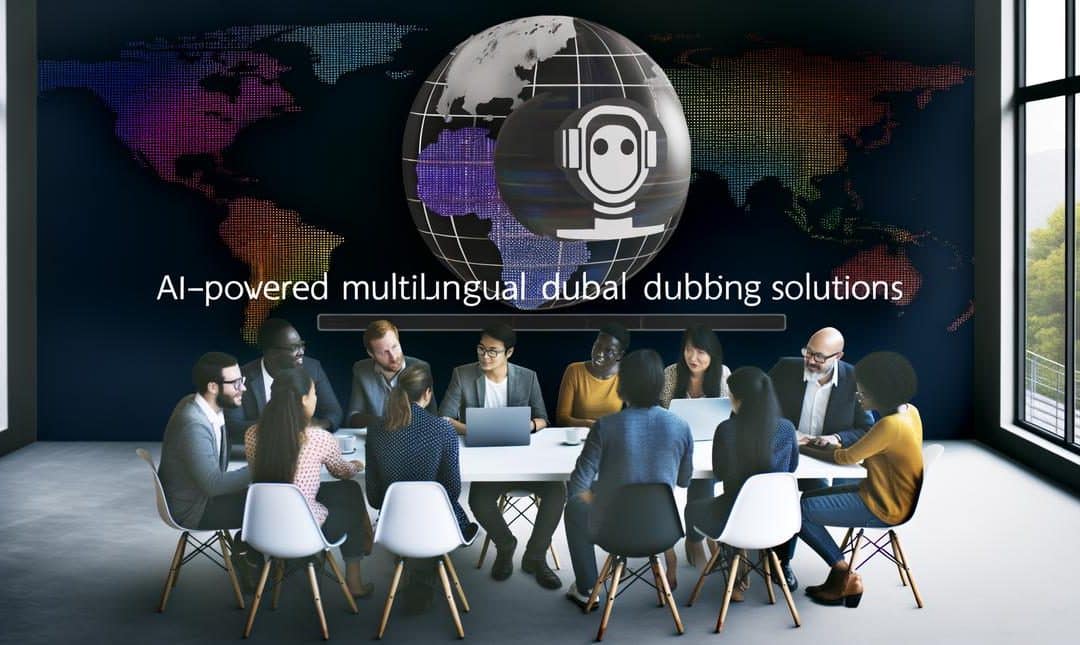In a world where content knows no borders, multilingual live dubbing powered by AI is enabling creators to seamlessly connect with global audiences. AI-driven automation tools are not only enhancing creativity but are also streamlining operations, cutting costs, and saving valuable time for creators looking to expand their reach.
The Global Reach of AI-Driven Dubbing
Language should not be a growth ceiling.
AI-driven multilingual dubbing takes one voice and multiplies it across markets, live and on demand. Your words, your tone, carried into Spanish, Hindi, Arabic, and more. Not a flat robot voice, a branded sound that stays consistent. I have seen a small creator flip on live dubbing during a launch stream, and watch comments arrive in three languages within minutes. Strange at first, then obvious.
The mechanics are simple to use, if not simple under the hood. Upload or stream, select target languages, set a glossary for brand terms, and let the system handle timing and voice match. Tools like YouTube Aloud show how accessible this is getting. Lip sync improves, pauses stay natural, and key phrases get protected. It feels closer to a local presenter than a dubbed rerun, perhaps still imperfect, but close enough to drive action.
The payoff shows up fast:
- Reach, more watch time per video as audiences finally understand you
- Revenue, higher CPM in some regions and more qualified leads
- Speed, same day distribution in five or ten languages without extra crews
Agencies once charged thousands for each hour of content. AI cuts that to a fraction, turning experimentation into a weekly habit. You can soft launch in Portuguese, measure retention, then scale the winners. Real time matters too. Low latency real time voice agents and speech to speech interface keep live streams inclusive, which keeps chat engaged. And engagement sells.
This is reach first. Creativity comes next. I think once translation and dubbing feel handled, you start asking better questions about what to make, not just where to publish.
Empowering Creativity Through AI Automation
Creativity needs space to breathe.
AI gives you that space. It takes the grunt work, then hands you sharper ideas. You keep the steering wheel, yet the heavy lifting happens in the background. Record once, then let a model riff on tonal choices, emotional beats, and phrasing that fits the scene. I like to see ten takes of the same line. One will always surprise me, perhaps two.
This is not about shortcuts, it is about better raw material. Generative models can propose openings, cliffhangers, and culture-safe idioms for each audience without diluting your voice. Pair that with emotion, prosody and intent detection, and you get dubbing that breathes with your performance, not over it. You feel braver trying a bolder read when the system catches tone drift and suggests fixes in real time.
What gets cleared off your plate, so you can stay in the creative pocket:
- First draft translations that you refine, not write from scratch
- Auto clean up of fillers, breaths, and room noise
- Subtitle timing that snaps to speech, lips included
- Variant scripts for A and B testing, all neatly versioned
Then you push further. Try different character ages. Add whimsy. Pull it back. I think the safety net makes risk feel smaller. Oddly, you end up taking more risks.
For a single example, HeyGen can propose alternative reads and voices in minutes. Use it once, and you start storyboarding differently. Less linear. More playful.
Small confession, I still tweak lines by hand. Old habits. But with automation catching the repetitive bits, my time shifts to direction and flavour. That sets us up for what comes next, the people and shared systems that turn these gains into a repeatable creative engine.
Building a Global Creative Ecosystem
Global reach is now a team sport.
Creators win faster when they do not build alone. The best ideas spread across time zones, get stress tested in fresh languages, and return sharper. That is the real lift of multilingual live dubbing, it turns solo projects into group projects with momentum. I have seen timid testers become confident publishers once they plug into a room of peers and a few generous experts.
You get access to a curated circle, not a noisy forum. Practitioners who ship. Linguists who catch nuance. Audio pros who care about tone. AI specialists who keep you from dead ends. We run small clinics, peer feedback loops, and practical co‑builds that end with assets you can use the same day. It sounds simple. It is, and that is why it works.
The path is structured so you never stall. Strategy first, then tool selection, then real workflows. Rights, consent, and voice safety are baked in. Monetisation gets covered, even if pricing makes you hesitate at first.
Automation comes in where it counts. We wire your dubbing pipeline, clip routing, and rights logging. One mention only, we use three practical Zapier automation moves to stitch distribution without adding headcount. Personalised AI tools, templates, and prompts are tuned to your niche, not a generic bundle.
- Clear learning path that compounds each week.
- Automation playbooks you can deploy fast.
- Personalised tooling matched to your voice.
- Community deal‑flow for cross‑language collabs.
- Expert hours when you hit a wall, it happens.
If this sounds like the room you need, perhaps it is. Or maybe not yet. Either way, say hello and explore options at alexsmale.com/contact-alex.
Final words
AI not only enhances multilingual dubbing but also empowers creators to effortlessly reach global audiences. By adopting AI-driven automation tools and collaborative frameworks, creators can thrive in an ever-evolving landscape. Embracing community and consistent learning, content creators are equipped to streamline operations, innovate creatively, and maintain a competitive edge.

